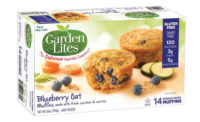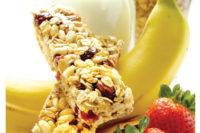
By Deborah Cassell
Photos by Vito Palmisano
It’s impossible to ignore the waft of fresh-baked chocolate chip cookies that greets those driving into Wenona, Ill., located along Interstate 39, just 20 miles south of I-80. By the time you reach the parking lot of Oak State Products’ modern facility in the modest Midwestern town (population: 1,000), you’re practically thirsting for a tall glass of milk to wash down the heavenly scent that emanates from the highly automated plant.
The aroma only get stronger (and better) as you enter the front door of Oak State, home of super-secret formulas and mixes for some of the snack food and baked good industry’s top-performing cookie and bar brands. We could tell you who those clients are, but we’d have to kill you. And, of course, Oak State would kill us, too … in a manner of speaking.
Instead of going into the nitty-gritty details, Snack Food & Wholesale Bakery will explain just how this company is making a name for itself in the highly competitive contract manufacturing world. The bakery’s product and packaging capabilities are extensive. In addition, it produces its own proprietary shelf-life extender. (Turn to “Cookie Monster.”) And the fabulous baker boys who manage the business know a thing or two about creating high-quality, innovative products.
“Our expenditure is in production,” says Steve Goulding, chairman of the board. “We do everything but the sales force and marketing.”
To that point, equipment updates and expansions are commonplace at Oak State, which added a new oven in 2004, a new packaging room in 2005 and new sandwiching equipment in 2006. It’s hard to believe that the company employed just 75 people in a 75,000-sq.-ft. facility in 1994. Today, more than 350 workers reside in the now 200,000-sq.-ft. plant.
Oak State offers complete dough-mixing and cooling capabilities, as well as wire-cut and rotary depositing, and extrusion technology for bars. It also produces crumbs, as well as inclusions that are packaged in 25-40-lb. containers for use in ice cream. And it boasts a building dedicated solely to chocolate enrobing. (See “If They Build it …”)
The company also acts as a test plant of sorts for customers, who rent its ovens to sample products they’re working on in at their own facilities. During SF&WB’s visit, two such clients were doing just that.
Major startup projects occur once every two years or so, adds Dave Van Laar, president and CEO. Such projects sometimes require adding new systems, or even more than that. For example, what if an entire oven is needed to supply capacity for a startup, but it’s not available?
“We have to think about getting a new one … and a building to go with it,” Van Laar says.
As Goulding points out, Oak State’s focus always is on “more automation and better equipment.”
Whether producing cookies or bars, production of all Oak State products starts out the same way. Ingredients such as sugar, flour and oil are bought in bulk. Minor mix-ins such as oat bran, starch and cocoa are pre-stored and -weighed prior to being added to the dough. Pallets containing each of the ingredients required for a batch are hand-dumped into the mixer. An employee at the start of each line fills out a mix sheet that lists the ingredients and their quantities, as well as the bake times and temperatures, in every batch.
“We can track everything for traceability,” Van Laar says.
Cookie Cutters
The cookies bake in a three-zone, indirect-fire tunnel oven at 300-400°F for 7-10 minutes. Each zone has a different function, Van Laar notes. Zone 1 sets the cookies, Zone 2 flattens and bakes them, and Zone 3 gives the cookies their golden brown color.
“The longer the oven, the more you can make,” Van Laar points out.
After the cookies exit the oven, a cooler - featuring an exhaust system to reduce the fumes - blows air above and below them. They then ride a mesh belt to the cooling room, where they reach a temperature of about 70°F before being packaged. About 200 tons of refrigeration capacity facilitates this process. Quality assurance (QA) technicians check the racks every 30 minutes for size, pH, moisture and other variables. (These techs work out of the plant’s QA lab, where water activity, color, height, weight and other measurements are tested regularly.) All abnormalities are reported to a supervisor.
Bar Tenders
Package Perfect
During SF&WB’s recent tour, single-serve cookies were in full production. After being baked and cooled, the cookies ride a conveyor belt that opens up to safely drop them, one by one, onto another belt below for packaging. The cookies keep moving along the upper belt until the computer determines that they’re needed, cueing the conveyor belt to open. The packaging machine sets the speed.
Once a cookie drops, it rides a single-file belt featuring an electronic red-eye, an alignment bar and vertical pins to ensure that only one cookie at a time is packaged in a single-serve overwrap. The cookies speed up and slow down based on how fast the line is packaging them. During SF&WB’s visit, each line was packaging 114 individually wrapped cookies per minute.
If a package comes up empty, it’s automatically discarded. The single-serve cookies are placed 12 to a box by employees before being shrink-wrapped. All cookies go through a metal detector and checkweigher; underweight cookies are discarded. Sell-by dates and other coding then are ink jet-coded on the packages.
As a contract manufacturer, Oak State does not keep an inventory of its goods. Rather, customers (usually third-party carriers) pick up the product at the plant and take it to their brand warehouses for distribution.
Whether it’s offering customers innovative solutions or simply producing the best chocolate chip cookies on the market, the scent that lingers upon leaving Oak State’s factory in Wenona cannot help but remind you of the company’s success.
How sweet it is.


